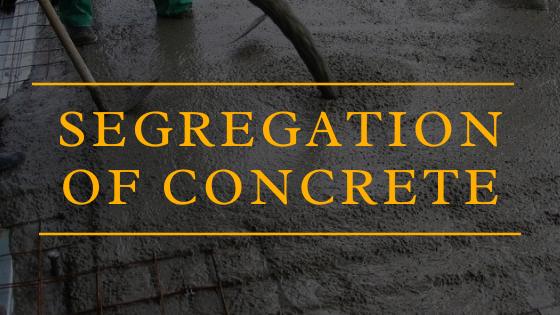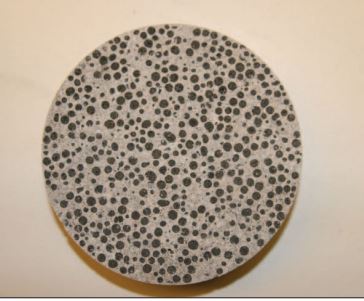
The separation of constituents of concrete so that their distribution in the concrete mix is not uniform is known as segregation of concrete.
Causes of Segregation of Concrete
- The difference in the sizes of particles and the specific gravity of the mix constituents.
- The methods of handling concrete also cause segregation. Dropping concrete from a considerable height, passing along a chute, discharging against any obstacle may cause segregation of concrete.
- Concrete mixes with a high water-cement ratio are more prone to segregation.
- Vibration is used to compact the concrete. The excessive vibration may also cause segregation of concrete. The excessive vibration causes the coarse aggregates to settle towards the bottom of formwork and cement paste towards the top.
Types of Segregation of Concrete
There are two types of segregation:
- The coarse aggregates tend to separate out because they tend to settle or travel more than fine aggregates.
- Grout (Cement plus water) separate out. This occurs mainly in wet mixes.
How to control Segregation of Concrete?
- The segregation can be controlled by selecting suitable grading of aggregates and by care in handling, transporting and placing of concrete.
- If the concrete does not have to travel far and is transferred directly from the bucket to the final position in the form, the chances of segregation is less.
- The concrete should not be over vibrated. The vibrator should not be used to spread the heap of concrete over a large area.
- Air entrainment of concrete reduces the chances of segregation.
Tests to measure Segregation of Concrete
Segregation of concrete is difficult to measure quantitatively. It can be easily detected when concrete is handled on-site.
The flow table test used to measure the workability of concrete can also be used to get an idea of segregation.
The jolting applied during the test encourages segregation. If the mix is not cohesive the larger particles of aggregate will separate out and move towards the edge of the table.
Another form of segregation is possible in the test. The cement paste tends to run away from the centre of the table leaving the coarse aggregates behind.
To check segregation of concrete due to excessive vibration, a concrete cylinder or cube is vibrated for about 10 minutes and then stripped. By observing the distribution of coarse aggregates, segregation can be detected.


Segregation is really dangerous for concrete. But sometimes contractor does not care about this